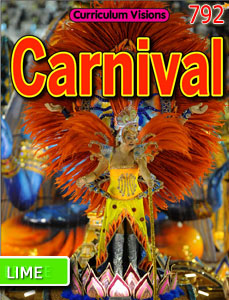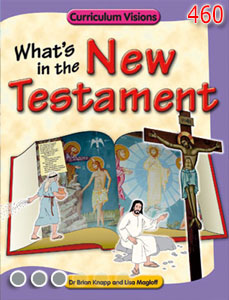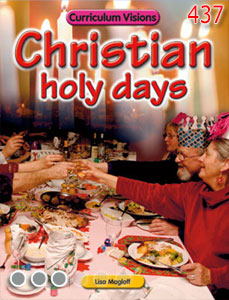Carnival is a Christian festive season that occurs before the Lent. (see also Pancake Day) The period stretches from January to early March depending on where in the world it is being held, and local customs.
Carnival does not have its roots in Christianity, however. It is a pagan festival celebrating the arrival of spring. Most carnivals involve public celebration and parades which make it like a moving street party. People often wear masks, dance, and play loud music.
Pope Gregory the Great (590–604) decided that fasting for Lent would start on Ash Wednesday. In preparation for this time of sacrifice, Carnival was arranged to be before the fasting, so that there was a clear division between the pagan and the Christian customs.
Part of the custom during Carnival was that the ruling class would be mocked by the people. To save these people losing their jobs - or worse - afterwards, their faces were hidden using masks and disguises.
The term Carnival relates mainly to places where Roman Catholics make up a large proportion of the population. In areas with mainly Anglicans and Methodists, the festival is Shrove Tuesday, that is Pancake Day, a time when all remaining perishable food that was to be forbidden in Lent was eaten up.
In German-speaking Europe and the Netherlands, the carnival season starts much earlier, on the 11th of November, and so includes Advent and Christmas.
In modern times, carnivals (often spelt carnival with a capital C, to distinguish it from any other celebration, and also spelt Carnaval in some places) are held all over the world and not just related to Roman Catholic areas. However, Roman Catholic Brazil still hold the world's biggest Carnival, in Rio de Janeiro. On some days about 2 million people take part. The costumes are renowned for their imaginative designs, as you can see on this page.
Carnival is celebrated in several cities in the USA, mainly those with a connection to Spanish or French colonial times. The earliest carnival celebration in North America occurred at a place on the west bank of the Mississippi river about 60 miles (97 kilometres) downriver from where New Orleans is today. It was held on the 3rd of March 1699. Many towns in the area now have their own Mardi Gras, including Mobile, Biloxi, New Orleans, and Pensacola. The Mardi Gras in New Orleans attracts the most visitors. It is held in the French Quarter.
Mardi Gras in America starts after Twelfth Night, on Epiphany (January 6) and continues until Lent. It includes parades, masquerade balls (dances where people wear masks), and king cake parties.
Celebrations peak two weeks before and through Fat Tuesday (Mardi Gras/ Shrove Tuesday/Pancake Day), the day before Ash Wednesday and the start of Lent. There is a major parade each day, with the largest and grandest parades taking place in the last five days of the season.
The parades in New Orleans are organised by Carnival krewes. Krewe float riders toss 'throws' to the crowds; the most common throws are strings of colourful plastic bead and doubloons (aluminium or wooden dollar-sized coins usually impressed with a krewe logo). Major krewes follow the same parade schedule and route each year.








